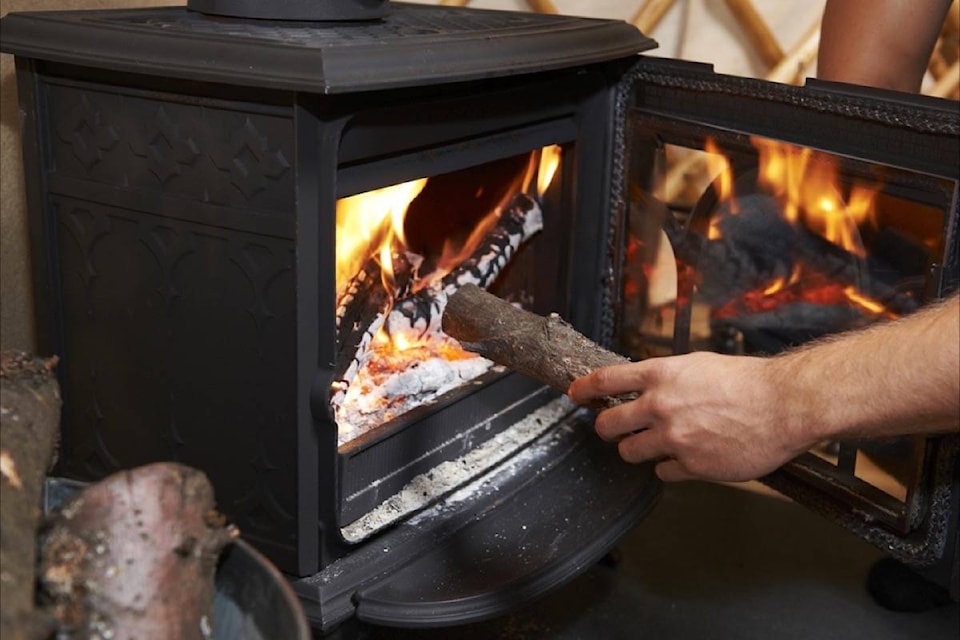Air quality in Vanderhoof is a problem that can be traced back, in part, to the widespread use of wood stoves but, according to Hillary Irvine, Deputy Director of Community Development for the District of Vanderhoof, there seems to be very little interest in programs aimed at remedying the situation.
“It might be that we just don’t have a lot of money for the program, and people are looking at the expense involved and deciding that their wood stove isn’t the problem,” said Irvine.
“We offer $500 toward the replacement of the old wood stove for a pellet burning appliance, and $800 for the conversion to gas, but the cost of those conversions is a lot more so we haven’t really captured the interest of people (in Vanderhoof).”
The program, operated by the B.C. Lung Association in cooperation with the provincial government, was last year responsible for the replacement of 600 old style wood stoves in B.C. and the organization is hoping to replace another 600 this year. In total, the organization claims to have been responsible for the replacement of 6,600 stoves since the program began in 2008.
Still, there are still an estimated 70,000 of the polluting wood stoves in use across the province, so the elimination of the pollution spewing culprits is no where in sight under the current rate of replacement. (By our calculations it would take 116 years.)
And it doesn’t require an in depth analysis of the studies of fine particulate matter issued by the B.C. Ministry of Environment and Northern Health to determine that there is a problem with air quality in Vanderhoof and other communities in the region.
On some days, all that’s required is for one to step outdoors and take a breath.
The past week has seen the Ministry issue a series of air quality advisories in which residents are advised to stay indoors and avoid strenuous exercise until such time as conditions improve.
Generally, that improvement is dependant upon a stiff breeze moving the contaminated air out of the valley where Vanderhoof is located and where temperature inversions can trap the smoke for extended periods of time, allowing it to build up to the point where air quality advisories are needed.
It’s a counter-intuitive situation for those who are unfamiliar with the situation in northern B.C. and whose impression of the region as being the bastion of clean air and water runs headlong into the reality of air quality conditions generally only found in congested urban centres.
According to the Ministry, despite the fact that wood smoke contains fine particulate matter (PM2.5) which can cause chronic and acute respiratory and cardiac diseases, especially among children and the elderly, it is often considered a “more natural form” of pollution and not taken as seriously as, say, vehicle exhaust or industrial air pollution.
Of course, wood burning stoves are not the only culprits in contributing to bad air quality.
The PM2.5 is also created through industrial burning of wood scraps, dust from heavy equipment use, and forest fires.
“I think that there are some folks who look toward the mill in town as the cause of the smoke in the air, but that’s probably not the case. I know they’ve pretty much changed the way they deal with materials. I understand they have shut down their bee-hive burners and have become a lot more responsible about the environment,” said Mayor Gerry Thiessen.
“We’re sitting in this valley and the smoke from wood stoves, I think, just gets trapped here and we have to wait for it to be blown out. The answer is probably in replacing all those wood stoves.”
But Irvine reported that there has been very little interest in the wood stove replacement program and that she has received only one application and four general inquiries since advertising the program on Facebook some weeks ago.
In an effort to raise awareness and promote the exchange program, the municipality is hostinga “Burn-it Smart” workshop at the Friendship Centre in Vanderhoof on Tuesday, March 20 at 6:30 p.m.. The workshop will offer advice on how to best cut and store wood, how to test the moisture content in that wood and how to burn in the most efficient way. Participants are encouraged to bring wood from home to be tested.
The workshop was hosted by the Wood Energy Technicians of B.C..
More information on the Wood Stove Replacement Program is available at bc.lung.ca/protect-your-lungs/wood-smoke-initiatives/bc-wood-stove-exchange-program.
